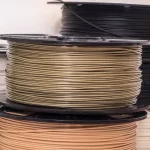Title: Sealed Tunable Boron Nitride Ceramics: A Promising Breakthrough Introduction: Sealed tunable boron nitride ceramics have emerged as a groundbreaking material in the field of advanced materials engineering. These ceramics possess unique properties that make them highly versatile and valuable for numerous applications. In this article, we will delve into the characteristics, synthesis methods, and […]





